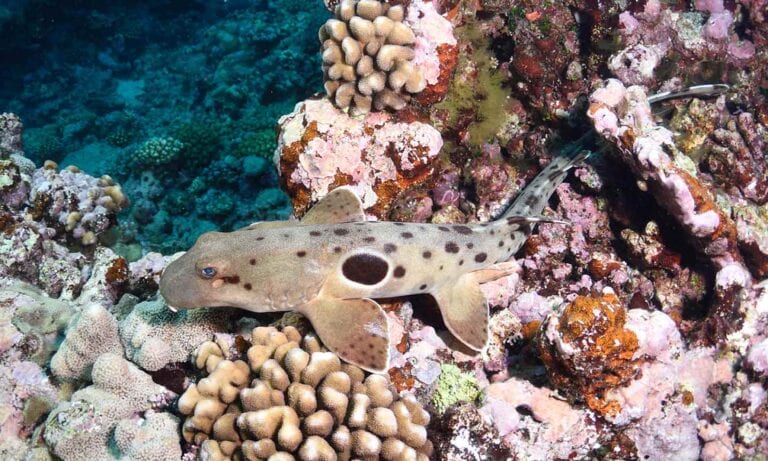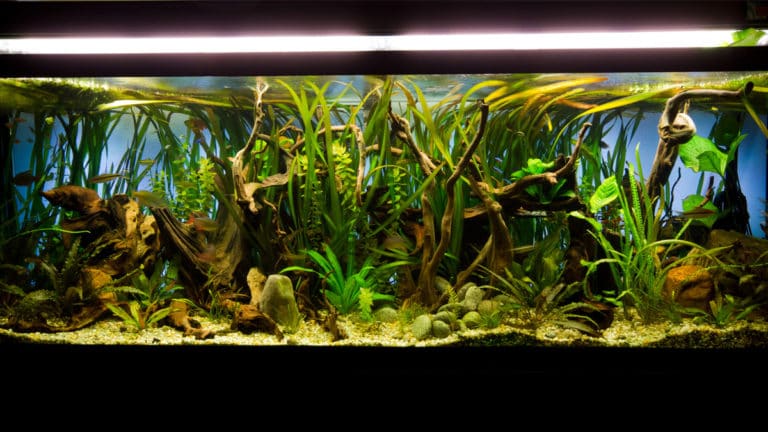Seahorses have captured the imagination of people for centuries. The genus name for seahorses — Hippocampus — literally means “horse sea monster.”
While seahorses appear to be very different from other fish in the sea, they are fish nonetheless. The creatures belong to the same class as all other bony fish (Actinopterygii), such as salmon, sardines and tuna. If one gently stretches a seahorse and lays it out on its stomach, it is easy to see that they truly are a fish.
Distinguishing Characteristics of Seahorses
Eight families are in the suborder Syngnathoidei, to which seahorses belong. This suborder includes the sea moths (Pegasidae), ghost pipefishes (Solenostomidae), seahorses and pipefishes (Syngnathidae), trumpetfishes (Aulostomidae), cornetfishes (Fistulariidae), snipefishes (Macroramphosidae), shrimpfishes (Centriscidae), and the rare freshwater indostomids (Indostomidae), that live only in Asian waters around Burma (Myanmar).
Members of this suborder have several unique biological and anatomical characteristics that distinguish them from all other fishes. Physical features exhibited include partial or complete external armor in the form of bony plates, tufted gills and an elongated snout that ends abruptly in a small mouth.
Seahorses are Members of the Pipefish Family
Seahorses belong to the pipefish family, members of which are most distinguished by the absence of a caudal fin and having an upright swimming habit. This extraordinarily upright creature swims by means of a translucent dorsal fin that is often nearly invisible, as well as with pectoral fins located behind the head. The dorsal fin can undulate at a rate of 35 times per second. Despite this impressive fin speed, seahorses are very slow swimmers. They have a prehensile tail that is used to grasp onto seagrasses, sea fans and other marine objects.
Seahorse Species
More than 50 species of seahorses exist. They are found in both warm tropical seas and chilly waters. All but one species thrive in marine (i.e., saltwater) environments. Seahorses are primarily marine fish, although a few species have been found living in brackish rivers. The seahorse occasionally sold as “freshwater seahorses” are actually freshwater pipefish. These are related to seahorses, but true seahorses cannot live in fresh water. The animals live in grass beds, kelp forests, mangroves and around corals. Colonies have been found in European waters, including England’s Thames Estuary.
The smallest member of the seahorse family, the dwarf seahorse (Hippocampus zosterae) is found in the Gulf of Mexico off Florida, west to Texas, as well as in the Bahamas/Turks and Caicos region. The species is beige, yellow, green or black with white markings that resemble splashes of paint. It is found among shallow grass flats, as well as in floating vegetation.
The lined seahorse (H. erectus) is found from New York state’s Atlantic waters through the Gulf of Mexico south to the West Indies. The species may develop intricate fronds (fern-like leaflets) and varies in color from ash gray, orange or brown to yellow, red or black. White lines are often found along the head and neck. Lined seahorses live in shallow water among seagrasses, sponges and seaweed.
The pot-bellied seahorse (H. abdominalis) lives in waters off Australia and New Zealand. The male is heavier than the female, with a longer tail and shorter, thicker snout; he is also more prominently marked. Pot-bellied seahorses are found in both shallow and deeper waters. The short-head seahorse or short-snouted seahorse (H. breviceps) is found in shallow seagrass beds, seaweed, coastal reefs and floating sargassum off the southern and western coasts of Australia. The species status is monitored under the Australian Wildlife Protection Act of 1998. The species is purplish brown, yellowish or reddish, covered with deep white spots and often having dark patches. Many short-snouted seahorses have thick skin fronds on their head and neck. They live in shallow seagrass beds, seaweed and along coastal reefs.
The longsnout seahorse (H. reidi) lives in the warm Western Atlantic from the Carolinas to the West Indies among seagrasses. It is a slender species that is usually covered with brown spots and numerous tiny white dots, particularly on the tail. The longsnout seahorse has eye spines and a long, thick snout.
Seahorse Facts
Seahorses must eat almost constantly in order to avoid starvation. They use their long snouts to suck in food, including small shrimp, plankton and fish larvae —whatever will pass through their tiny mouth. Unlike most other fish, seahorses don’t have scales. Their skin is stretched over bony plates into a kind of armor. Despite this protection, many seahorses are found, after autopsies have been conducted, among the stomach contents of larger fish.
Seahorses range in size from about 1 inch to more than 1 foot long. Small seahorses live about two years, while medium-size and larger species can live up to four years. Seahorses often change color. They do so to hide from predators, to indicate aggressive tendencies and to engage in courtship rituals.
Each eye can rotate independently from the other; consequently, one eye can look in one direction at the same time the other is scouting out a completely different area. This gives the seahorse a seemingly comical facial expression and is one of the reasons why the creature is such a popular addition to home aquariums.
Male Seahorse Pregnancy
Perhaps the most unusual feature of the seahorse is that the male gives birth. The male seahorse’s pregnancy begins with a greeting ritual dance that is initiated by the female. Their elegant courtship includes the pair changing color, entwining around one another and promenading together for up to nine hours.
Eventually, the female points her snout up and starts rising in the water. The male then begins to force water in and out of his abdominal brood pouch. The pair connect, their movements synchronized as they rise through the water, while the female positions her egg duct over the opening of the male’s pouch. They lock together in mid-water as the female transfers long, sticky strings of eggs into the pouch, where they are fertilized. When the bonding ritual has been completed, the partners drift down to the bottom of their habitat and the male sways gently back and forth as the eggs settle into his pouch.
Throughout the male’s incubation period, his mate visits him daily. The female seahorse swims over to him for several minutes of interaction that is reminiscent of courtship. They change color, wheel around seagrass fronds and promenade, holding each other’s tails. Then the female swims away until the next morning and the male goes back to vacuuming up essential food through his snout.
The number of young released by the male seahorse averages 100 to 200 for most species, but may be as low as five for smaller species, or as high as 1,500. Pregnancy lasts from two to four weeks, depending on the particular species. Seahorses do not look after their young once they are born. Infants are susceptible to being eaten by predators or being swept into ocean currents, where they drift away from feeding grounds or into water temperatures too extreme for their delicate bodies. Fewer than five infants out of every 1,000 born survive to adulthood. However, the survival rates of seahorse infants are fairly high compared to most fish, because they are initially sheltered in their father’s pouch during the earliest stages of development, while the eggs of most other fish are left to themselves soon after fertilization. Artists often depict the seahorse’s tail as being curled back toward the head; however, this position is actually impossible for an adult to attain. Young seahorses are more agile than adults and can bend their tails backward in a reverse crescent formation. Adult seahorses seldom carry the tail in a straight position and usually keep it coiled forward.
Seahorses In A Home Aquarium
Successfully keeping seahorses in a home marine environment isn’t all that difficult, provided the hobbyist follows a few guidelines. The animals must always be kept in a separate tank. Seahorses cannot compete for food if kept with almost any other fish.
They require optimal water conditions for survival, so a good filter is a necessity. Water flow should be gentle so that these weak swimmers are not blown around the aquarium. Frequent water changes are necessary for seahorses to thrive because of their keen sensitivity to nitrate levels, which should remain below 20 ppm. Hobbyists sometimes make the mistake of keeping these fish in water that is too warm. Seahorses fare best at temperatures that are between 68 and 72 degrees Fahrenheit.
Do not crowd these fish; for that reason, large aquaria are advised. Dwarf seahorses, however, are an exception. They are best kept in smaller tanks, where they are more likely to find food. The tank itself should be decorated with a variety of items that seahorses can use to anchor themselves with their tails. Good choices are pieces of synthetic corals and artificial plants.
Feeding Seahorses
Seahorses are almost always eating. Because the creatures lack teeth and have immovable jaws, they swallow prey whole. Seahorses prefer to eat live food in motion. Many specimens will starve to death if there is not a constant supply of live food organisms. I feed my seahorse three times a day and always have food available. These very picky eaters love adult brine shrimp, brine shrimp nauplii and Mysis shrimp.
Seahorses are amazing creatures that are unmatched in style and beauty. These aquatic “chess knights,” when viewed in a home or public aquarium, can bring hours of fascination and enjoyment to you and your family.
By Joe Zentner, a retired professor and a freelance writer.
Featured Image: Julian52000/Shutterstock
Share:









